Now, our GitHub repository and Azure Web App setup are ready. Let us implement the CI/CD pipeline with GitHub Actions.
GitHub Actions is a feature for automating various activities associated with a GitHub repository. GitHub Actions are triggered by events. GitHub has a wide range of events such as creating a pull request, opening an issue, forking a repository, pushing code to a repository, etc., that can trigger actions. We can define a set of activities that will be executed when any specific events are triggered.
To allow GitHub Actions to deploy our code to Azure Web App, we must authorize GitHub.
Go to the `coffee-app` repository page in GitHub. Click on `Settings` in the horizontal menu, and then click on `Secrets` in the vertical menu. You will get this page since we have not configured any secrets yet.
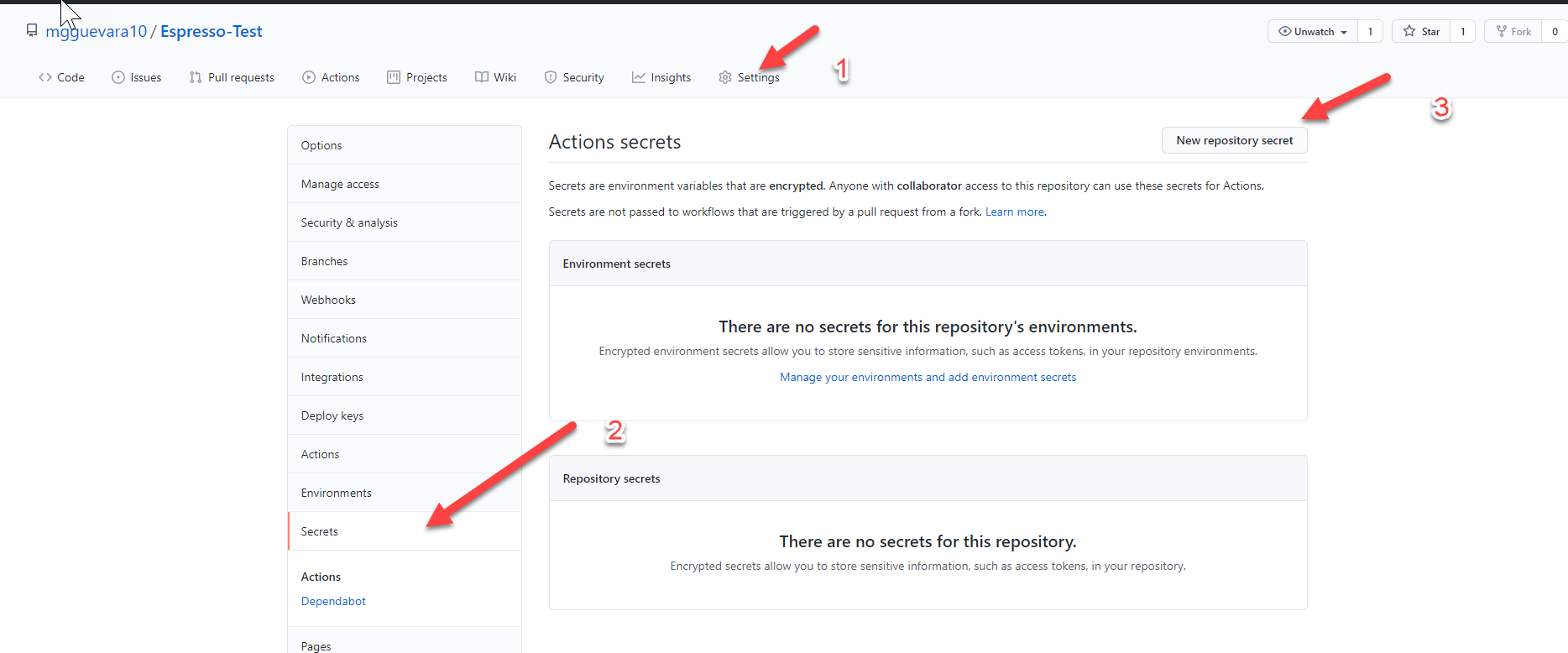
Click on `New repository secret.` Then, copy the contents of the
`your_application_name.PublishSettings` file that we have downloaded in the previous section, and paste it to the value field.
Give the name `AZURE_WEBAPP_PUBLISH_PROFILE` and click on `Add secret’.
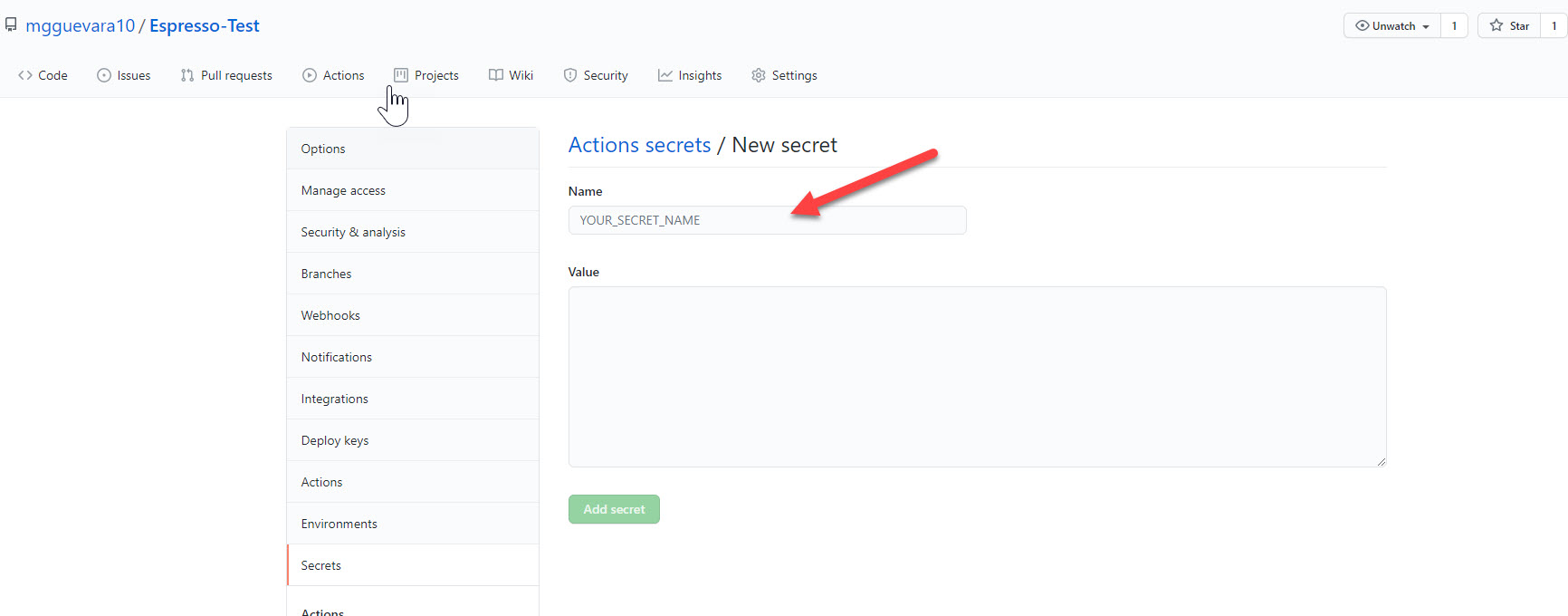
Go to the `coffee-app` repository page in GitHub. Click on `Actions` in the horizontal menu.
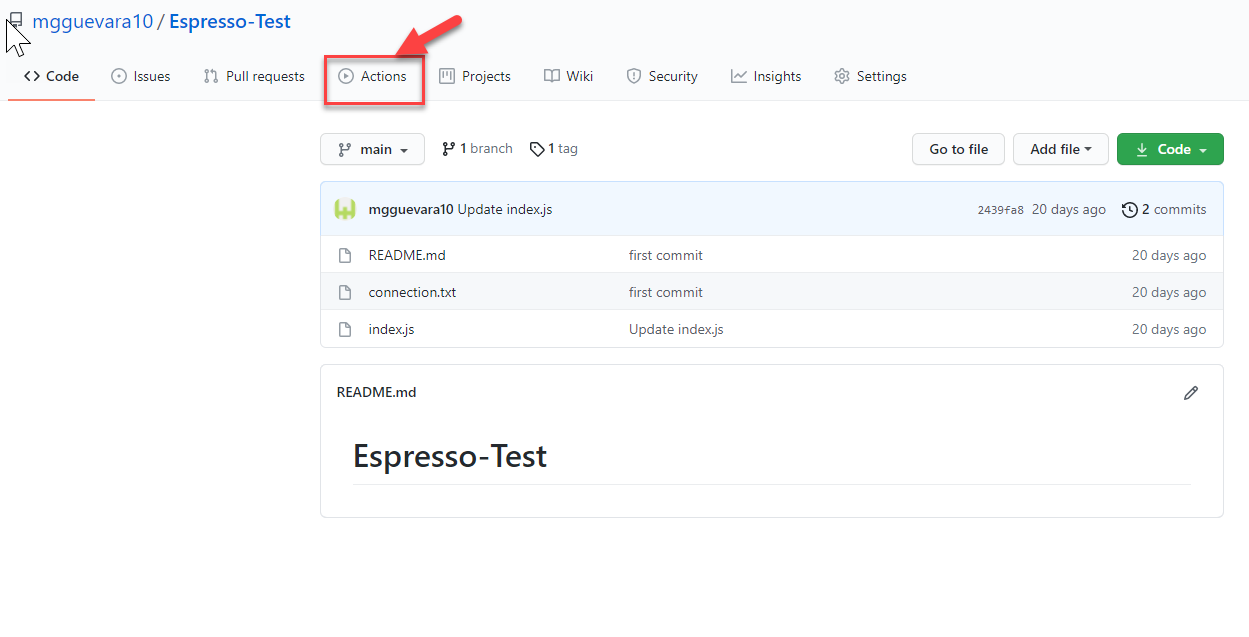
GitHub provides a set of pre-compiled actions for common use cases. In the ‘Deploy Node.js to Azure Web App` box, click `Set up this workflow.`
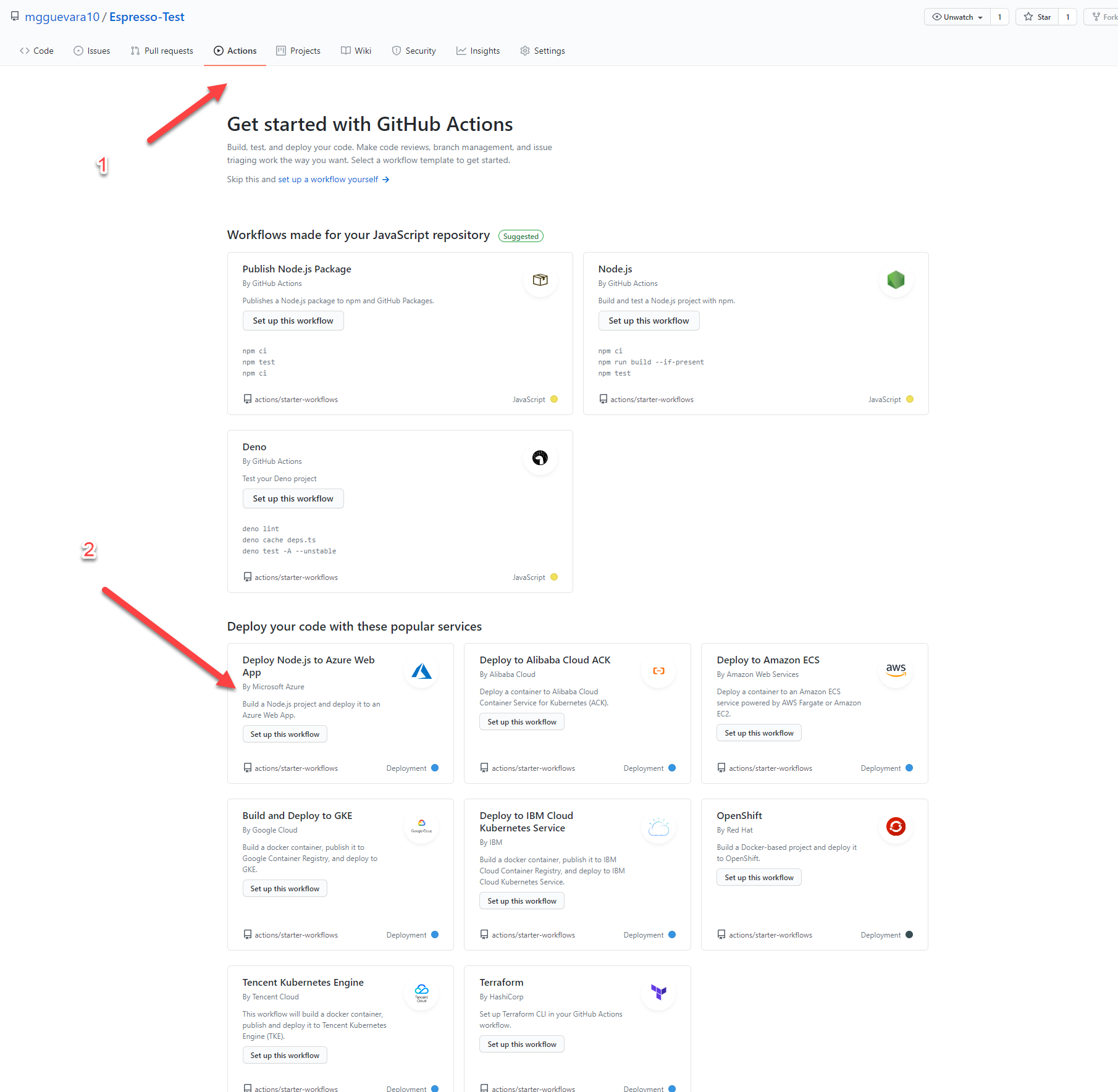
We get to edit a file named azure.yml file, which defines the GitHub Actions. This file has a set of default parameters set by GitHub. We have to update them according to our application setup.
In this file, update the `AZURE_WEBAPP_NAME` to the name web app in Azure.
The parameter `AZURE_WEBAPP_PACKAGE_PATH` must be set to the path of the web app. Since our Node.js app is at the root of our repository we can keep `.` as default.
The `NODE_VERSION` must be set to the appropriate Node.js version. We shall set it to`14.x`.
Our Node.js application has no external dependencies. So, we have not created the `packages.json` file in our repository. But, this `azure.yml` file has a step named `npm install, build, and test.` It has a series of commands that uses `npm.` Remove this part entirely since we are not going to use it.
- name: npm install, build, and test run: |
# Build and test the project, then
# deploy to Azure Web App.
npm install
npm run build --if-present
npm run test --if-present
This is our final `azure.yml` file.
on:
release:
types: [created]
env:
AZURE_WEBAPP_NAME: PuraVida-coffeeapp # set this to your application's name
to your web app project, defaults to the repository root
version to use jobs:
environment: production
steps:
- uses: actions/checkout@v2
- name: Use Node.js ${{ env.NODE_VERSION }}
jobs:
environment: production
steps:
- uses: actions/checkout@v2
- name: Use Node.js ${{ env.NODE_VERSION }}
uses: actions/setup-node@v2
with:
node-version: ${{ env.NODE_VERSION }}
- name: 'Deploy to Azure WebApp'
uses: azure/webapps-deploy@v2
with:
app-name: ${{ env.AZURE_WEBAPP_NAME }}
publish-profile: $
{{ secrets.AZURE_WEBAPP_PUBLISH_PROFILE }}
package: ${{ env.AZURE_WEBAPP_PACKAGE_PATH }}
You may note that it’s referring to `AZURE_WEBAPP_PUBLISH_PROFILE` parameter that we just created.
After updating all these changes in `azure.yml,` click on `Start commit` on the upper right side, and commit the `azure.yml` file.
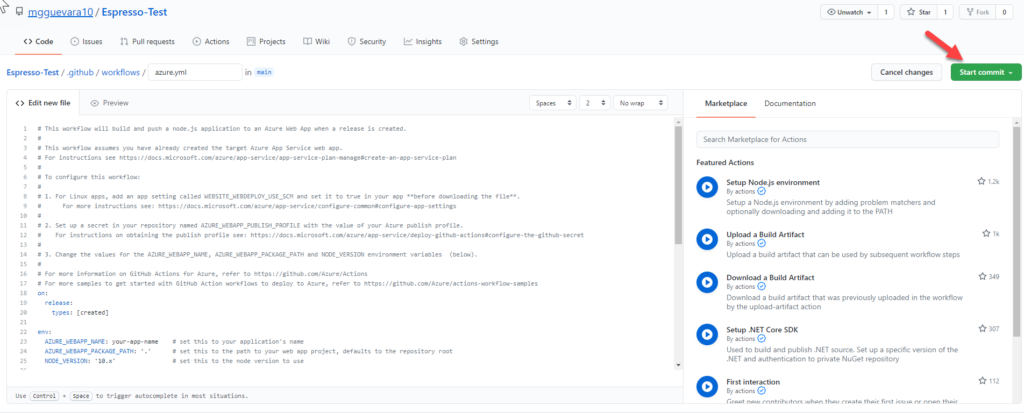
GitHub Actions are executed at certain events. You may have noted this part in the `azure.yml.`
on:
release:
types: [created]
It means that the defined actions are executed when a `release` event is triggered. So, let’s create a new Release in GitHub.
Go to the GitHub repository page. In the middle left, there is a section named `Releases.` We do not have created any release so, click on `Create a new release.`
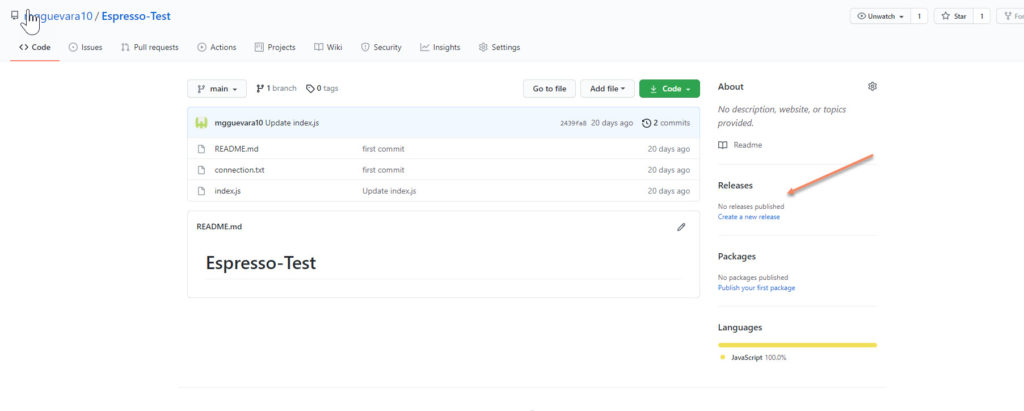
It means that the defined actions are executed when a `release` event is triggered. So, let’s create a new Release in GitHub.
Go to the GitHub repository page. In the middle left, there is a section named `Releases.` We do not have created any release so, click on `Create a new release.`
Fill in the `Tag version,` `Release title,` and `Description` fields appropriately.
Then, click on `Publish release.`
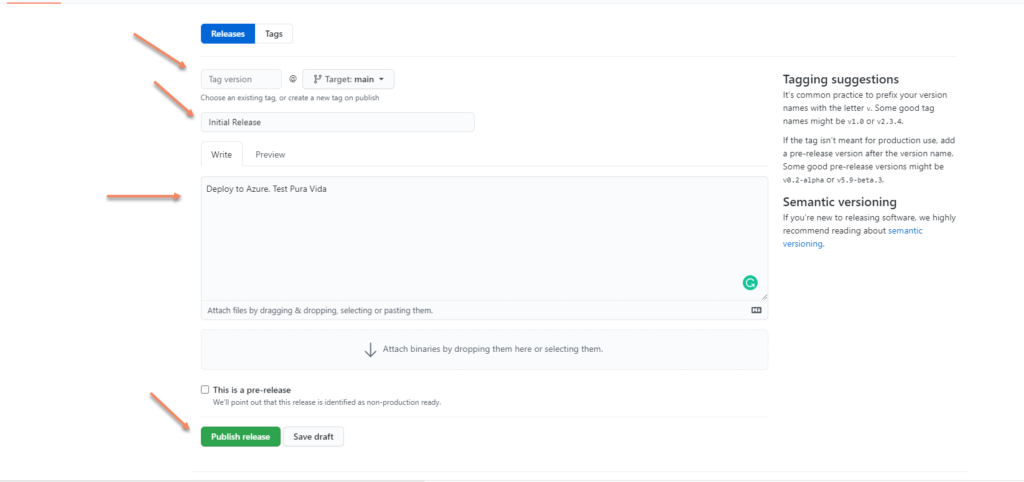
The `release` event we created in the previous section should trigger the GitHub Actions workflow.
Click the `Actions` menu in the repository. You will see the green tick mark if the `workflow` run is successfully completed. If there are any failures, this will be red, and you will have to do some troubleshooting.
Go to the web application in the Azure portal and click on `Browse` in the top menu.
We will get the home page of our application.
Now, update the application, commit and push the code to GitHub, and create a new release. You will find that the Web App in Azure is automatically updated to the latest version at each consecutive release we create on GitHub.
I provided a low-level technical approach on how to implement a CI/CD pipeline with GitHub Actions to deploy a web app to Azure. If your following along make sure to read part 1.